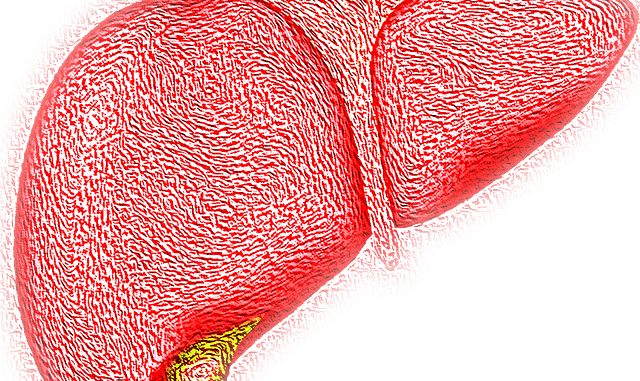
The liver is a critical organ in a vast range of important physiological and biological functions. Numerous examples include metabolism of drugs generally, metabolism and synthesis of glycogen, synthesis of bile juice, fat metabolism, cholesterol synthesis and ultimately the storage of minerals including iron and various fat-soluble vitamins.
One of the most difficult disease conditions to contend with is when the liver becomes diseased as in NAFLD (non-alcoholic fatty liver disease). It occurs as a result of abnormal metabolism due to fat entrainment within the liver. The condition is linked to both obesity and diabetes mellitus (type 2) (Parekh and Anania, 2007). NAFLD is also linked to increased risk of heart disease as well as other liver metabolism issues (Targher and Arcaro, 2007).
Once NAFLD becomes established, fat is deposited in the liver which produces fibrosis, cirrhosis and inflammation and finally liver failure (Farrell and Larter, 2006). It is a fairly common in older adults and can be detected in at least 25 percent of the population. There is a now a worrying trend that younger people up to the age of 24 are beginning to show symptoms of fatty liver disease which puts them at an earlier risk of liver cancer, diabetes and heart problems.
The Symptoms Of NonAlcoholic Fatty Liver Disease (NAFLD)
There are various stages to NAFLD.
Many people with NAFLD have no symptoms.
However, symptoms can include:
•Severe tiredness
•Generally feeling bad or having a malaise
•Full, uncomfortable feeling in the upper abdomen
•Unexplained weight loss
•Nausea with or without vomiting
•Abdominal pain and swelling (ascites)
•Swelling in the legs (edema)
•Blood in stools or bowel movements
•Jaundice (yellowed skin and white of the eyes) or discolored skin
•Bleeding from the gums or nosebleeds
•Red, spidery blood vessels just under the skin surface.
In addition, some children who have NAFLD have dark, velvety patches on their hands, armpits and necks. This skin discoloration, called acanthosis nigricans, indicates an increased risk for type 2 diabetes.
A recent study conducted by the University of Bristol revealed that NAFLD is affecting much younger people than previously thought. The results were presented in 2019 at the International Liver Congress in Vienna. About 4,000 young people were enrolled into a longitudinal study called the Children of the 90s which was designed to study the lives and health of children born in 1991 and 1992 in the country of Avon, England. At the age of 18, all participants had an ultrasound which showed that 2.5% had fatty liver disease. Five years later, a new type of scan known as transient elastography or fibroscan showed that 20% now had fatty deposits in their liver. In some cases it was steatosis which is a strong indicator for NAFLD. In some cases 2.4% also had fibrosis was scarring of the liver. On this basis, the same population would start to develop cirrhosis due to extreme scarring. Most of the young people with NAFLD were overweight and with a BMI over 25. of the those with the highest levels of fatty liver deposits, at least 60% were obese. This study removed anyone who drank excessively.
The condition is reversible however which is some good news. Adopting a healthier lifestyle, reducing weight and only drinking in moderation can reverse the long-term effects of the disease.
Non-Alcoholic Steatohepatitis
One of the most unnerving side conditions of NAFLD is NASH. This condition is known as Non-Alcoholic Steatohepatitis.
Symptoms of NASH indicate a more serious condition, and should be checked immediately.
The symptoms are:
•Severe abdominal pain
•Abdominal bloating or swelling
•Mental status or behaviour change such as confusion, delirium, hallucinations, delusions, and reduced awareness or alertness.
•Change in consciousness or alertness such as passing out or fainting.
•Severe tiredness
•Vomiting blood or black material which resembles coffee grounds
•Sudden behavioural changes
NASH is characterised by inflammation which leads to fibrosis, cirrhosis and even liver cancer. Too many carbohydrates in the diet, especially overconsumption of fructose from beverages, fruit juices and confectionary along with too much ingestion of fat and lack of exercise contribute to the prevalence of this disease.
The NHS in the UK estimates that NASH afflicts 5 per cent of the population.
There is some benefit it would seem from oral supplementation with L-glutamine although this is based on mouse (murine) studies (Sellmann et al., 2017). Otherwise, complete dietary and other lifestyle changes need to be observed to reverse the effects of NASH and NAFLD in particular.
References
Parekh, F., Anania, A. (2007) Abnormal lipid and glucose metabolism in obesity: implications for nonalcoholic fatty liver disease. Gastroenterology 132 pp. 2191–207
Sellmann, C., Baumann, A., Brandt, A., Jin, C.J., Nier, A. Bergheim, I. (2017) Oral Supplementation of Glutamine Attenuates the Progression of Nonalcoholic Steatohepatitis in C57BL/6J Mice. J. Nutr. 147(11) pp. 2041-2049 DOI: 10.3945/jn.117.253815
Leave a Reply